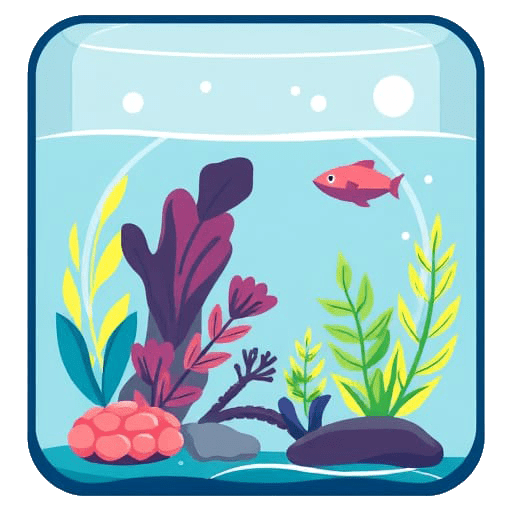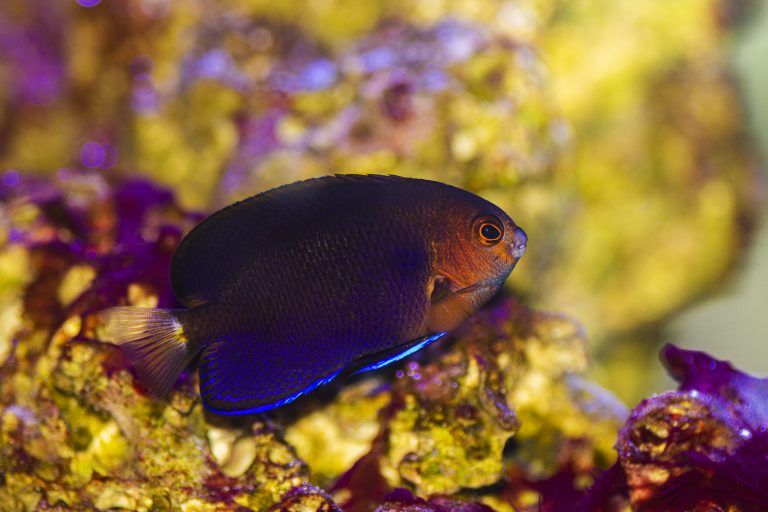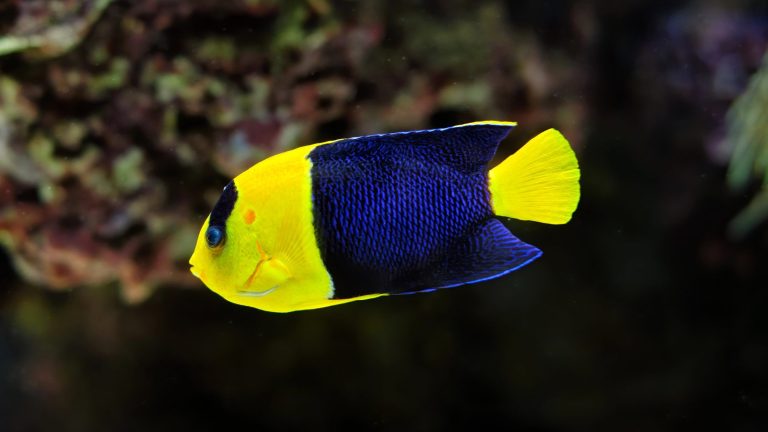Snowflake Eels (Echidna nebulosa), otherwise known as Starry Moray or Snowflake Moray Eels, are interesting animals that are sometimes kept in aquariums. This species is commonly found in predatory tanks but is occasionally added to reef tanks! Snowflake Eels have beautiful black, yellow, and white patternwork through their bodies. They can be great additions to a saltwater fish tank, but they’re not for every kind of marine aquarium. Snowflake Eels are fairly easy to care for. They are very hardy and an excellent introductory eel for new hobbyists. They are considered semi-aggressive and are nocturnal predators, usually hunting and ambushing crustaceans such as shrimp and crabs.
In an aquarium, it’s common to see them poke their heads out of rocks during feedings. They use two sets of jaws to grab prey and drag it down into their gullet during feeding. Be cautious when keeping this fish in a reef tank because it consumes crustaceans. It may knock corals over since it spends most of its time near live rock. The Snowflake Eel will be roughly 2 feet (60cm) in length when it is grown in captivity. They can be larger in the wild. This guide will give insight into Snowflake Eel aquarium requirements, feeding, and other information.
Aquarium Requirements
When fully sized, the Snowflake Eel should be kept in fish tanks that are 55 gallons or larger. A well-covered top is needed because this fish is known to be one of the best escape artists. Because of its size and temperament, the eel should have quite a bit of live rock with varying hole sizes. This will give it room to move around, hide when threatened, and provide a similar habitat experienced in the wild.
Is the Snowflake Eel Reef Safe?
As stated earlier, the Snowflake Eel may bump into coral or accidentally knock it over because it spends most of its time near live rock. However, the Snowflake Eel does not consume coral. On the other hand, crustaceans may be in danger with a Snowflake Eel around. Some aquarists have had success with this eel species and Cleaner Shrimp, but that is something you’d have to try. The temperament of an eel may differ from individual specimens, and behavior can change in an instant.
Water Parameters
Snowflake Eels do best in water temperatures ranging from 72 – 78 degrees Fahrenheit, dKH levels between 8 and 12, pH levels ranging between 8.1 and 8.4, and salinity levels between 1.020 and 1.025 sg. As stated before, they are quite hardy and have a nice range of water parameters they can tolerate. If you’re looking for ways to test salinity levels, consider checking out: “Different Salinity Reading Tools for Saltwater Fish Tanks” for more information about these tools.
Food & Diet
Snowflake Eels are carnivorous animals and require a nice range of foods. There is a wide variety of food that it can eat such as:
- Krill (frozen or freeze-dried)
- Fish (silversides)
- Shrimp
- Mussels
- Scallops
- Crabs
Although I do not recommend it, a Snowflake Eel can potentially be handfed. Caution must be taken because they can give a powerful bite. It is best to start hand-feeding when the moray is small to minimize the risk of getting bitten or at least to receive a smaller bite. It is a predator so it may mistake your fingers for a quick snack.
Tank Mates
The Snowflake Moray Eel can be kept with fish that are larger and that won’t easily fit into the eel’s mouth. They should do fine with coral, snails, anemones, and sea urchins, but not crustaceans such as crabs, lobsters, and shrimp. Keep in mind that this species of eel will become quite large so fish that are larger than its mouth at first, may not be in the future.
Eels are commonly kept in larger aquariums with bigger and sometimes more aggressive fish. They are commonly kept with tangs, large angelfish, lionfish, Foxface, Groupers, and large wrasses.
It is possible to keep 2 Snowflake Eels in a marine tank together. The eels should be introduced at the same time and they should also be similar in size. Snowflake Eels are cannibals and if the opportunity to eat a much smaller eel arises, it will do so! I would personally not keep 2 Snowflake Eels in a fish tank together unless it is 150 gallons or larger. They are quite territorial and larger aquariums will give them more room to create their territory.
Breeding
Breeding Snowflake Eels has not really been conducted in captivity because of their mating rituals, inability to distinguish between male and female, and rarity in acquiring a mating pair.
Final Notes
Snowflake Eels are a fantastic fish for a saltwater aquarium. They all have very unique personalities and are quite active in moving within the live rock of your aquarium. Be mindful of the fact that eels are escape artists and if a well-sealed lid is not provided there is a high possibility of them jumping out!
Image by Michael Bentley on wikiMedia
Thanks for clicking this tab, this is planned for a future feature of this website!




